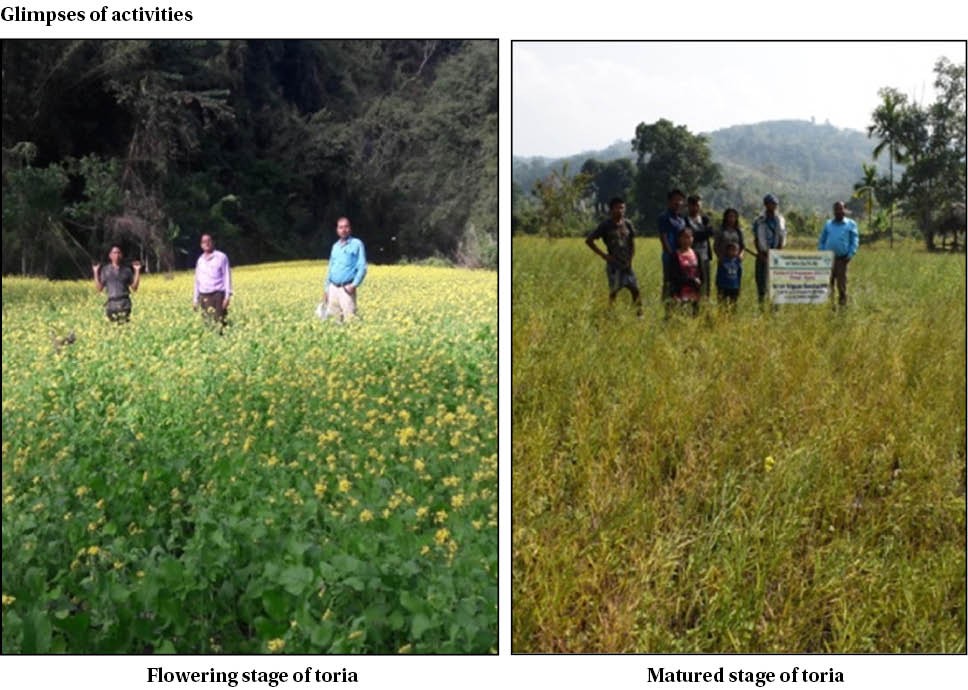
Manoj Kumar, KL Meena, DJ Rajkhowa, E Lireni Kikon & A Namei
ICAR-Krishi Vigyan Kendra, Longleng
Oilseed crops are a significant part of the agricultural economy in India. India is the fourth largest oilseed economy in the world. Rapeseed and Mustard is the second most important edible oilseed after Ground nut sharing 27.8 per cent in India’s oil seed economy. In terms of acreage, oilseeds occupy 14.1 per cent and rape seed mustard alone occupies 3 per cent of the total cropped area in the country.
Rice is most important crop of the Longleng District of Nagaland. TRC /WRC paddy was cultivated during May-June to middle September to middle October and rest of the period of the year kept as fallow. Whereas the rainfall received up to the October month and residual soil moisture remains in the field till December. Thus there is potential for growing of toria in rice fallow for increasing the cropping intensity, per unit productivity and income of the farmers. Therefore, the Krishi Vigyan Kendra (KVK) Longleng, Nagaland took an initiative and conducted an frontline demonstration (FLD) on toria in the rabi season in lowland rice -fallow for additional income of the poor tribal farmers. The frontline demonstrations on Toria (Cv. TS 36) was conducted under lowland rice -fallow in different villages under the District in an area of 12.0 ha and 20.0 ha with 60 nos. and 147 nos. of farmers during the year 2016-17 and 2017-18 respectively. Toria was sown as second crop after harvesting of rice in residual soil moisture just harvesting of rice during the first week of October to 3rd week of October. Neem oil was sprayed @ 3-4 ml per litre of water to manage the insect pest and disease problem at interval of 7-10 days. The toria crop was matured in about 105-115 days.
Impact of technology:
From the two years data, result revealed that lowland rice yield was ranges from 2860-3280 kg/ha (mean: 3080 kg/ha) at farmers field. Mean yield (2 year) of toria was recorded 755 kg/ha. After introduction of toria as second crop at farmers field, Rice Equivalent Yield (REY) of toria was recorded 2831 kg/ha. System productivity in terms of REY of toria was recorded 5597 kg/ha as compared to rice mono cropping (3080 kg/ha). System profitability (101.70, 108.20 Rs/ha/day), Net Income (Rs. 13730/ha, 28123/ha) were recorded under rice-fallow and rice- green gram respectively. Additional income of the farmers was recorded Rs.14393/ha under rice-toria cropping sequence as compared to rice-fallow. Therefore, it could be concluded that toria is an option for growing in residual soil moisture just after harvesting of lowland rice (Panikheti) for getting additional income of the farmers. Farmers showed very much interest for growing of toria in rice-fallow.






